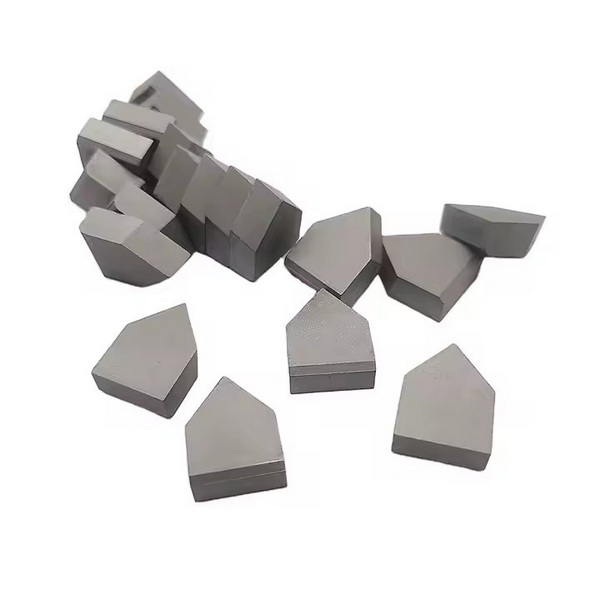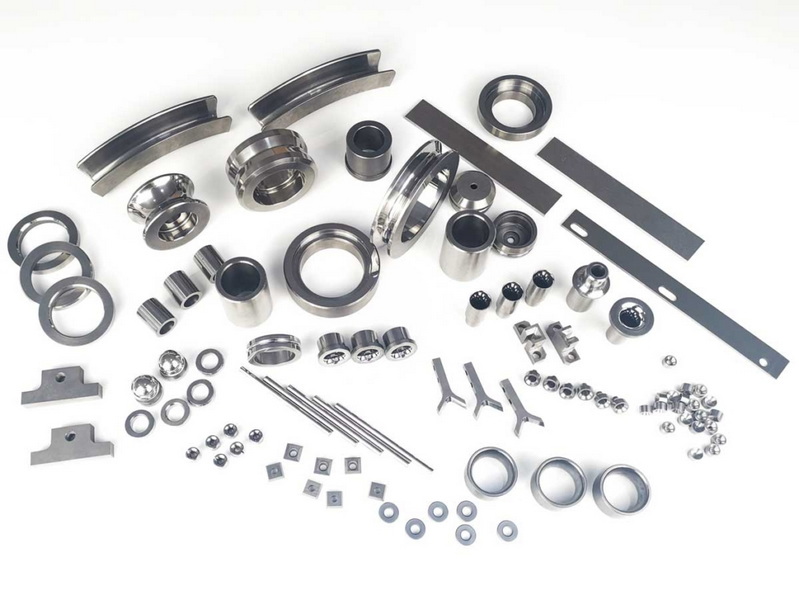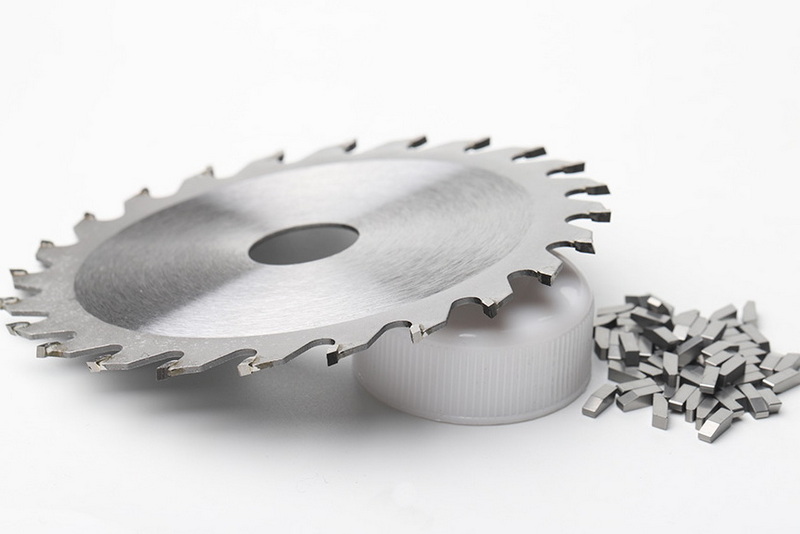Content Menu
● Introduction to Tungsten Carbide
>> Composition
● Properties of Tungsten Carbide
>> Hardness and Wear Resistance
>> Thermal Conductivity
>> Electrical Conductivity
>> Corrosion Resistance
● Applications of Tungsten Carbide
>> Industrial Applications
>> Consumer Products
● Manufacturing Process
● Environmental Considerations
● Future Developments
>> Nanotechnology Applications
>> Composite Materials
● Economic Impact
● Conclusion
● FAQs
>> 1. What is Tungsten Carbide Made Of?
>> 2. Is Tungsten Carbide a Good Conductor?
>> 3. What Are the Main Applications of Tungsten Carbide?
>> 4. How Hard is Tungsten Carbide?
>> 5. Is Tungsten Carbide Corrosion Resistant?
● Citations:
Tungsten carbide is a material that has sparked considerable interest due to its unique properties, which blend the characteristics of both metals and ceramics. This article aims to delve into the composition, properties, and applications of tungsten carbide, exploring whether it is more accurately described as a ceramic or a metal.

Introduction to Tungsten Carbide
Tungsten carbide, with the chemical formula WC, is a compound made by combining tungsten and carbon atoms. It is often referred to as a metal/ceramic hybrid because it combines the hardness and wear resistance of ceramics with the toughness and ductility of metals.
Composition
Tungsten carbide is primarily composed of tungsten and carbon. In its most common industrial form, it is mixed with a small amount of a metal binder, typically cobalt, to enhance its toughness and durability. This composite material is known as cemented tungsten carbide. The addition of cobalt allows tungsten carbide to be sintered into complex shapes, making it versatile for various applications.
The composition of tungsten carbide can vary depending on the intended use. For example, in cutting tools, a higher cobalt content may be used to improve toughness, while in wear parts, a lower cobalt content might be preferred to maximize hardness.
Properties of Tungsten Carbide
Hardness and Wear Resistance
Tungsten carbide is renowned for its exceptional hardness, which is comparable to that of corundum and approaches the hardness of diamond. This property makes it ideal for applications requiring high wear resistance, such as cutting tools and abrasives. The hardness of tungsten carbide is measured on the Mohs hardness scale, where it ranks very high, indicating its ability to withstand significant wear without degrading.
Thermal Conductivity
Tungsten carbide exhibits high thermal conductivity, which is beneficial in applications where efficient heat dissipation is necessary. This property is particularly valuable in industrial settings where equipment operates under high temperatures. For instance, in cutting tools, high thermal conductivity helps to dissipate heat generated during machining, reducing tool wear and extending its lifespan.
Electrical Conductivity
While tungsten carbide is a good electrical conductor, its conductivity is significantly lower than that of pure metals like copper. This characteristic is important in applications where electrical properties are a consideration. Despite its lower conductivity, tungsten carbide is still used in certain electrical components due to its other beneficial properties.
Corrosion Resistance
Tungsten carbide has excellent corrosion resistance, making it suitable for use in environments where exposure to corrosive substances is a concern. This property is particularly advantageous in applications such as chemical processing equipment and marine hardware.
Applications of Tungsten Carbide
Tungsten carbide is widely used across various industries due to its unique combination of properties.
Industrial Applications
- Cutting Tools: Tungsten carbide is used in cutting tool inserts due to its hardness and wear resistance, allowing for high-speed machining without significant tool wear. This is especially beneficial in the manufacturing of precision parts where tool longevity is crucial.
- Mining and Oil Industry: It is used in wear parts for mining and oil drilling equipment, where its durability and resistance to abrasion are crucial. Tungsten carbide components can withstand the harsh conditions encountered in these industries, reducing downtime and increasing productivity.
- Aerospace: In the aerospace industry, tungsten carbide is used for components that require high strength and resistance to wear, such as rocket nozzles and turbine blades.
Consumer Products
- Jewelry: Tungsten carbide is popular in jewelry due to its hardness and durability, making it ideal for rings and other items that are subject to wear. Its scratch resistance ensures that tungsten carbide jewelry retains its appearance over time.
- Sports Equipment: It is used in sports equipment, such as golf clubs and ski edges, where its hardness and resistance to wear are beneficial. Tungsten carbide components can enhance performance by providing consistent and reliable performance under demanding conditions.

Manufacturing Process
The manufacturing process of tungsten carbide involves several steps:
1. Powder Production: Tungsten carbide powder is produced through a chemical reaction involving tungsten and carbon.
2. Mixing with Binder: The powder is then mixed with a metal binder, typically cobalt, to enhance its toughness.
3. Sintering: The mixture is pressed into the desired shape and sintered at high temperatures to form a solid part.
4. Machining: The sintered part may undergo additional machining to achieve precise dimensions and surface finish.
Environmental Considerations
Tungsten carbide is generally considered environmentally friendly due to its durability and long lifespan, which reduces the need for frequent replacements and minimizes waste. However, the extraction and processing of tungsten can have environmental impacts, such as soil and water pollution. Efforts are being made to improve the sustainability of tungsten mining and processing.
Future Developments
Research into tungsten carbide continues to explore new applications and improvements in its properties. Advances in nanotechnology and composite materials are expected to enhance its performance and expand its use in emerging fields such as renewable energy and advanced manufacturing.
Nanotechnology Applications
Nanotechnology has the potential to further enhance the properties of tungsten carbide by creating nanostructured materials with improved mechanical properties. This could lead to even more efficient cutting tools and wear-resistant components.
Composite Materials
The development of composite materials incorporating tungsten carbide with other materials is another area of ongoing research. These composites can offer tailored properties for specific applications, such as enhanced thermal conductivity or improved toughness.
Economic Impact
The economic impact of tungsten carbide is significant, particularly in industries where its unique properties are crucial. The use of tungsten carbide in cutting tools, for example, has increased productivity and reduced costs by extending tool life and improving machining efficiency. Similarly, in the mining and oil industries, tungsten carbide components help reduce downtime and increase overall efficiency.
Conclusion
Tungsten carbide is a versatile material that combines the hardness and wear resistance of ceramics with the toughness and ductility of metals. Its unique properties make it an essential component in various industrial and consumer applications. Whether classified as a ceramic or a metal, tungsten carbide's hybrid nature allows it to excel in demanding environments.

FAQs
1. What is Tungsten Carbide Made Of?
Tungsten carbide is primarily made from tungsten and carbon atoms. It is often combined with a metal binder, such as cobalt, to enhance its toughness and durability.
2. Is Tungsten Carbide a Good Conductor?
Tungsten carbide is a good electrical conductor but has lower conductivity compared to pure metals like copper. Its electrical conductivity is about 10.7% that of copper.
3. What Are the Main Applications of Tungsten Carbide?
Tungsten carbide is used in cutting tools, mining and oil drilling equipment, jewelry, sports equipment, and other applications where its hardness and wear resistance are beneficial.
4. How Hard is Tungsten Carbide?
Tungsten carbide is extremely hard, with a hardness comparable to corundum and approaching that of diamond. It ranks high on the Mohs hardness scale.
5. Is Tungsten Carbide Corrosion Resistant?
Yes, tungsten carbide has excellent corrosion resistance, making it suitable for use in environments where exposure to corrosive substances is a concern.
Citations:
[1] https://www.ipsceramics.com/technical-ceramics/tungsten-carbide/
[2] https://www.linde-amt.com/resource-library/articles/tungsten-carbide
[3] https://www.istockphoto.com/photos/tungsten-carbide
[4] https://create.vista.com/photos/tungsten-carbide/
[5] https://grafhartmetall.com/en/what-is-the-difference-between-ceramics-and-tungsten-carbide/
[6] https://ggsceramic.com/news-item/tungsten-carbide-vs-silicon-carbide-differences-explained
[7] https://www.freepik.com/free-photos-vectors/tungsten-carbide
[8] https://www.alamy.com/stock-photo/tungsten-carbide.html
[9] https://www.ipsceramics.com/tungsten-carbide-metals-and-ceramics-working-as-one/
[10] https://en.wikipedia.org/wiki/Tungsten_carbide
[11] https://www.wolframcarbide.com/is-tungsten-carbide-a-metal-or-a-ceramic/
[12] https://en.wikipedia.org/wiki/Tungsten
[13] https://htscoatings.com/pages/tungsten-carbide
[14] https://www.generalcarbide.com/wp-content/uploads/2019/04/GeneralCarbide-Designers_Guide_TungstenCarbide.pdf
[15] https://www.freepik.com/free-photos-vectors/tungsten
[16] https://www.shutterstock.com/search/tungsten-metal
[17] https://www.shutterstock.com/search/tungsten-carbide
[18] https://www.gettyimages.hk/%E5%9C%96%E7%89%87/tungsten-carbide?page=3
[19] https://www.reddit.com/r/explainlikeimfive/comments/18ppmzu/eli5_the_difference_between_a_metal_alloy_and_a/
[20] https://periodictable.com/Elements/074/pictures.html
[21] https://www.istockphoto.com/photos/carbide
















